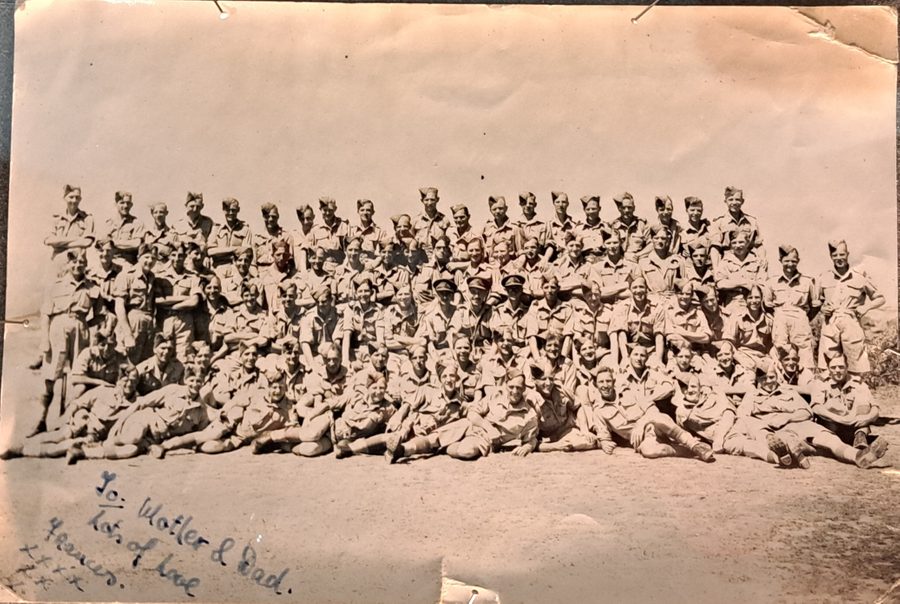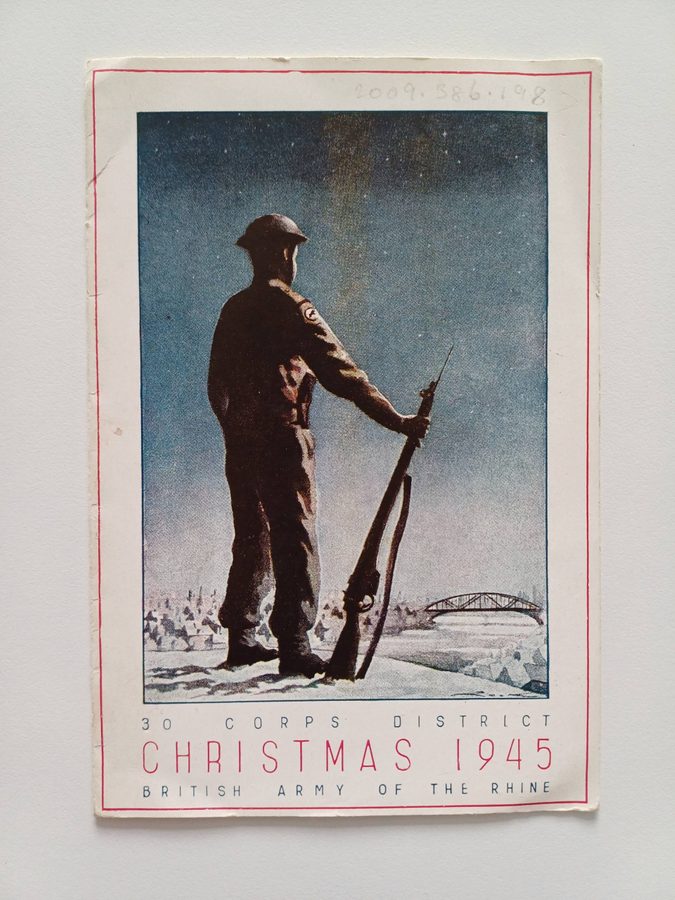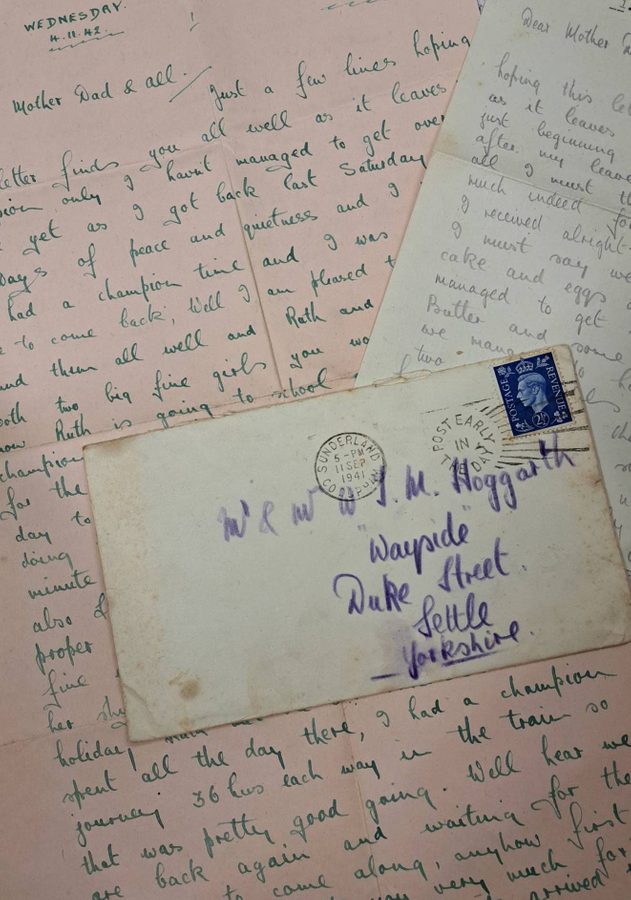Hoggarth Collection

Photo of Francis Hoggarth and his regiment in North Africa
Hoggarth Collection
Date c.1900-1960
A collection of letters and postcards
What is the Hoggarth Collection?
In 2007, descendants of the Hoggarth family of Settle generously donated around 1,000 letters and postcards mainly written during the first half of the 20th century, to Craven Museum.
The family ran Settle Post Office and were well known locally. During the Second World War, letters were written by siblings Francis, Henry, George, Stella, Jean and Francis’ Scottish wife Kathleen. A particularly notable letter was also written by Harold Hodgson, husband of Stella.
Despite the lack of photographs, the letters from the 1940s paint a vivid picture in our minds, showing what it felt like to be bombed nightly and to see the subsequent devastation in Britain. They reveal how painful it was to fear for the life of a husband sent overseas and try to believe that he would return home. The day-to-day grind is recorded, so we can feel how uncomfortable being a soldier could be, as they felt tiredness, fear, hunger, shortage of money, and lack of sleep. Frank Bullock, a cousin wounded for the third time wrote from his hospital bed, ‘the army finds the weak spots in a man.’
The everyday details show how life was made more bearable by activities such as catching game, swimming in the sea, eating oranges and almonds, going to a film or concert, and enjoying a hearty Christmas dinner. Henry tells us how delighted he was to meet and spend time with Women’s Auxiliary Airforce (WAAFs), Land Army and Auxiliary Territorial Service (ATS) ladies.

Postcard sent by Francis Hoggarth to his parents in Settle

Card sent by Francis Hoggarth to his family in Settle
What part did the brothers play in the Second World War?
Francis had been married just two years when the war broke out. He served in the Heavy Anti-Aircraft regiment, first in Sunderland, then in North Africa and by January 1944, in Italy. He speaks of his fear as incendiary bombs are being dropped very close by and machine gun bullets are flying. He sees the bomb damage in Sunderland where the busiest shops in Main Street are down to the ground. Free cigarettes were their reward for bringing a plane down. Francis was a prolific letter-writer and he leaves a full record. Conditions were tough during training and they slept in their clothes.
‘We have got a decent sergeant but the old S.M. [Sergeant Major] puts you through your paces.’
At times he was fed up with all the travelling. In North Africa he found it hard to make conversation with the locals and felt ‘this part of the world is not in my line.’ In 1943, he says how pleased he is to hear of the Italians ‘packing it in’.
Henry was also a gunner and writes about his training, passing the driving test and being in the gas chamber without masks, which made him feel unwell.
There are four letters from George who stayed in Britain, but whose work was very important as he began as a telegraphist, then after training in Loughborough worked in communications. It is likely his work was very secret.
How did the Second World War affect wives and siblings?
Kathleen’s letters are amongst the most moving in the collection. She had lost her father at the age of 2 when he was serving in Pakistan. When Francis was sent abroad, to her ‘the worst [had] happened’ and she felt that she would never cope if he were to be killed.
Stella was in Leeds at the time of the Leeds Blitz and she leaves us a detailed account. Another letter was written by her husband Harold Hodgson containing graphic details such as a man’s leg being blown off, 23 horses killed and the areas that were hit.
Letters by Jean and the other women speak of the children’s antics, the impact of the rationing of food and clothes, knitting and sewing. Their stress increased when the children were ill.
Happily, the Hoggarth siblings all survived the war, although occasionally the letters mention a person they know who is missing or killed. Descendants of the family can be proud that they have shared this record with us. Ninety of the letters have now been transcribed by a Craven Museum volunteer.
This piece was written by a volunteer at Craven Museum who has spent the past year working with the Hoggarth collection.

Selection of letters from the Capstick-Hoggarth collection

